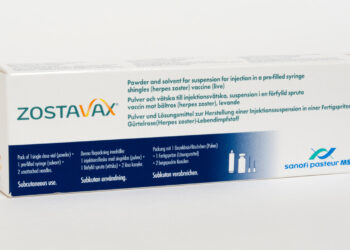Beneficial pediatric obesity treatment response was associated with a reduced risk of obesity-related events in young adults, a nationwide prospective cohort study in Sweden showed.
Compared with poor response, good response to obesity treatment was associated with lower risk of type 2 diabetes (adjusted HR [aHR] 0.42, 95% CI 0.23-0.77), dyslipidemia (aHR 0.31, 95% CI 0.13-0.75), and bariatric surgery (aHR 0.42, 95% CI 0.30-0.58), reported Emilia Hagman, PhD, of the Karolinska Institute in Sweden, and colleagues.
Obesity remission showed similar reduced risks, as well as reduced risk of hypertension (aHR 0.40, 95% CI 0.24-0.65). Good response in obesity treatment or obesity remission was associated with a reduced risk of mortality (aHR 0.12, 95% CI 0.03-0.46), though treatment response was not associated with reduced risk for depression or anxiety, they noted in JAMA Pediatrics.
“The long-term effects of treating obesity in childhood were largely unknown,” Hagman told MedPage Today in an email. “Many people believe that because maintaining weight loss is so challenging, early treatment might not make a real difference in reducing the risk of serious health problems like type 2 diabetes, high blood pressure, or heart disease later in life. Our research helps answer this critical question and shows the importance of addressing obesity early.”
Evidence-based treatment options for childhood obesity — mainly behavioral lifestyle modification — have been available for more than 15 years in Sweden, Hagman and colleagues noted.
“I found it especially encouraging that lifestyle therapy for obesity in childhood can have a lasting impact well into adulthood,” Hagman told MedPage Today. “While there are very positive outcomes from weight-loss surgery, this study shows that responding to early lifestyle therapy can also lead to long-term benefits, even up to 30 years of age. It’s a hopeful message that early intervention truly matters.”
In an editorial accompanying the study, Leonard Epstein, PhD, of the University at Buffalo in New York, and colleagues, pointed out, however, that the type of treatment was not presented, which is important as different types of treatment can impact outcomes differently.
Also, “the broad definition of treatment duration does not provide an indication of intensity, frequency, or number of treatments,” Epstein and colleagues wrote. And additional data on parental and sibling obesity “would be valuable to assess the impact of the pediatric treatment implemented on the state of transgenerational obesity within a family,” they added.
Still, the study by Hagman and colleagues “demonstrates for the first time, to our knowledge, the impact of pediatric treatment for obesity on young adult cardiometabolic disease, bariatric surgery, and mortality,” they wrote. “These data will be useful to consider criteria for clinical effectiveness of treatment, as well as pointing out limitations in our current approaches to treatment of pediatric obesity.”
Ultimately, Hagman said she believes “the long-term goal of treating childhood obesity should go beyond improving lifestyle habits and quality of life — it should also focus on reducing the degree of obesity itself.”
“While well-being is incredibly important, this research shows that failing to achieve weight loss can lead to serious health problems, like type 2 diabetes, early in life,” Hagman added. “This highlights the need for clinicians to prioritize effective weight management in their care plans.”
For their study, Hagman and colleagues examined children and adolescents with obesity within The Swedish Childhood Obesity Treatment Register (BORIS) along with general population comparators. Study participants were 6 to 17 years of age who received at least 1 year of obesity treatment; comparators were matched on a ratio of 1:5 on sex, year of birth, and geographical area.
Baseline data were collected between 1996 and 2019, with formal analyses conducted in 2023. Outcomes were assessed for individuals 18 to 30 years of age between 2005 and 2020.
Of 6,713 individuals included in the study, 56% were male. The median age at obesity treatment initiation was 12.1 years, and the median treatment duration was 3 years.
Limitations included that the National Patient Register does not encompass non-specialized medical care, such as primary care, and though many conditions in the study are usually managed with pharmacotherapy, it could not be ruled out that certain conditions might have been managed exclusively with lifestyle modifications. Additionally, because obesity-related comorbidities often occur asymptomatically, this could have impeded an accurate assessment of true incidence. Also, even with substantial healthcare reimbursement in Sweden, selection bias was a concern.
Disclosures
Hagman reported research and medical writing assistance from Novo Nordisk during the conduct of the study as well as personal fees from Novo Nordisk outside the submitted work. Co-authors reported relationships with Novo Nordisk, Eli Lilly, and Evira AB.
Editorialist Epstein and a co-author reported grants from the NIH during the conduct of the study. Another co-author reported being a primary investigator/co-investigator for an NIH-funded childhood obesity treatment study.
Primary Source
JAMA Pediatrics
Source Reference: Putri RR, et al “Effect of pediatric obesity treatment on long-term health” JAMA Pediatr 2025; DOI: 10.1001/jamapediatrics.2024.5552.
Secondary Source
JAMA Pediatrics
Source Reference: Epstein LH, et al “Pediatric obesity treatment improves young adult health” JAMA Pediatr 2025; DOI: 10.1001/jamapediatrics.2024.5559.
Source link : https://www.medpagetoday.com/pediatrics/generalpediatrics/113862
Author :
Publish date : 2025-01-21 19:21:22
Copyright for syndicated content belongs to the linked Source.


![author['full_name']](https://newshealth.biz/wp-content/uploads/2025/01/Good-Response-to-Obesity-Treatment-in-Childhood-Improved-Outcomes-Down.jpg)












